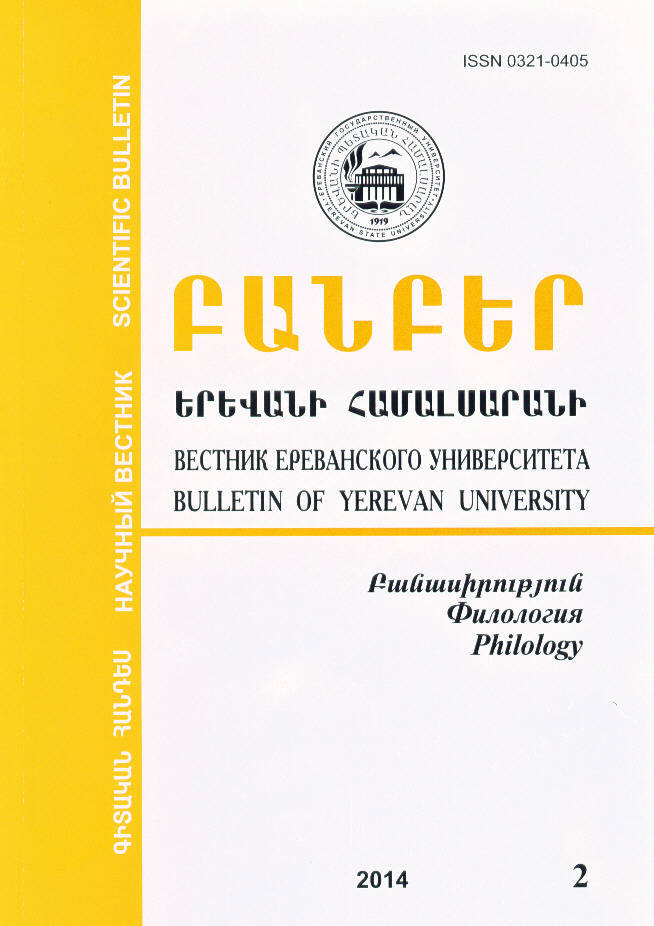The Evolution of the Phoneme Theory in E. Aghayan’s Works
DOI:
https://doi.org/10.46991/BYSU:B/2014.5.2.003Keywords:
phoneme, sound, phone, trinomial phonemic conception, evolution of the phonemeAbstract
Aghayan’s phonemic viewpoints were formed for 40 years en route from the publications of his works – “Course on General Linguistics” (1947) until “Basics of Linguistics” (1987). During this period his ideas were formed and concentrated mostly on the qualitative changes of phonemes, rather than its elaboration and enrichment. Three main disciplines on phonemes are outlined in the eminent author’s works of this period: 1) communicative or social, 2) epistemological-physical, 3) sense isolating abstract. For the third stage it is important that: a. as opposed to the first two stages, where the phoneme is considered a substantial unit, this stage defines it as “an abstract unit of linguistic construction,” b. besides phoneme and sound, an idea of a third unit – the context-phone (hnchurd) – is introduced as the representative of the first two in the speech plan.
In the basis of the proposing of the three component system of phonemic units is the new discipline of the perception of language and speech. According to it, the speech is not only an individual plan, but also a social one, i.e. one can distinguish the public speech that has its parallel definition in others’ works (E. Coseriou, G. Jahukyan) as individual speech. Professor E. Aghayan not only did enrich the study of phoneme with new ideas basing on the principles of pragmatic phonemics, but he also suggested a new model of phonemic distributive analysis. Through a profound study of the phonemic system of
Grabar (Grammar of Grabar: Phonetics, Yerevan, 1964), he became the founder of Phonemics in Armenian linguistics.
Downloads
Published
How to Cite
Issue
Section
License
Copyright (c) 2021 Bulletin of Yerevan University

This work is licensed under a Creative Commons Attribution-NonCommercial 4.0 International License.

